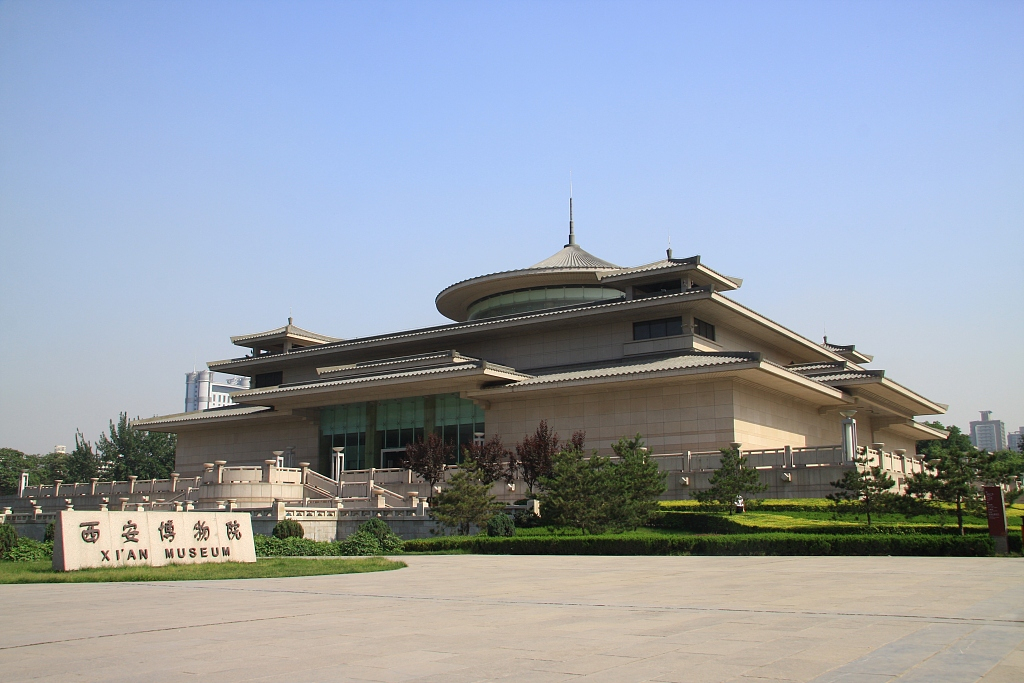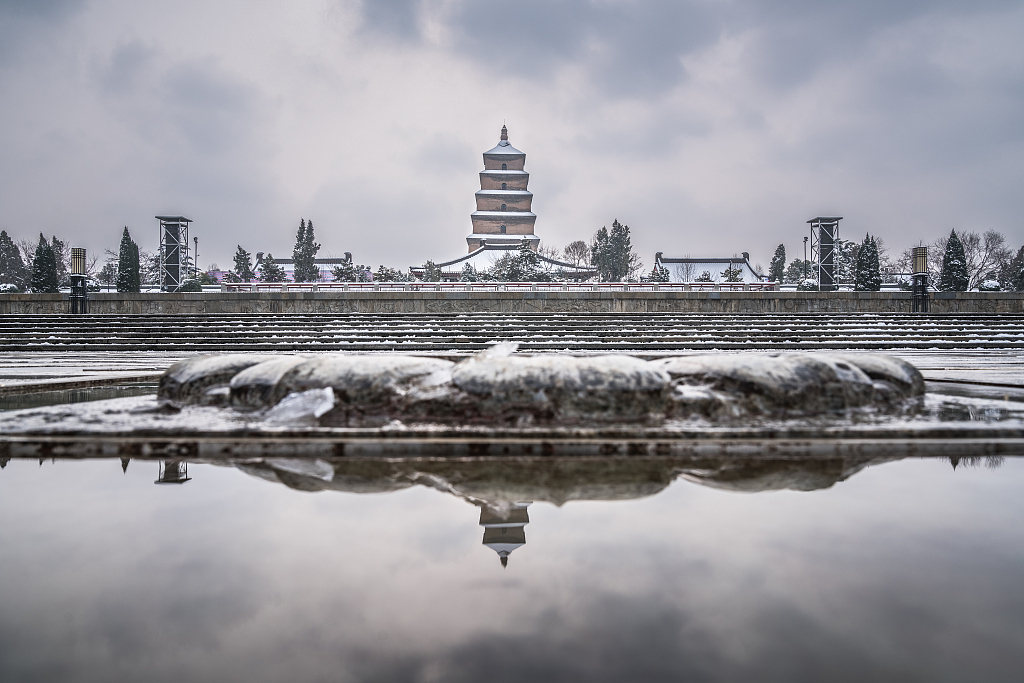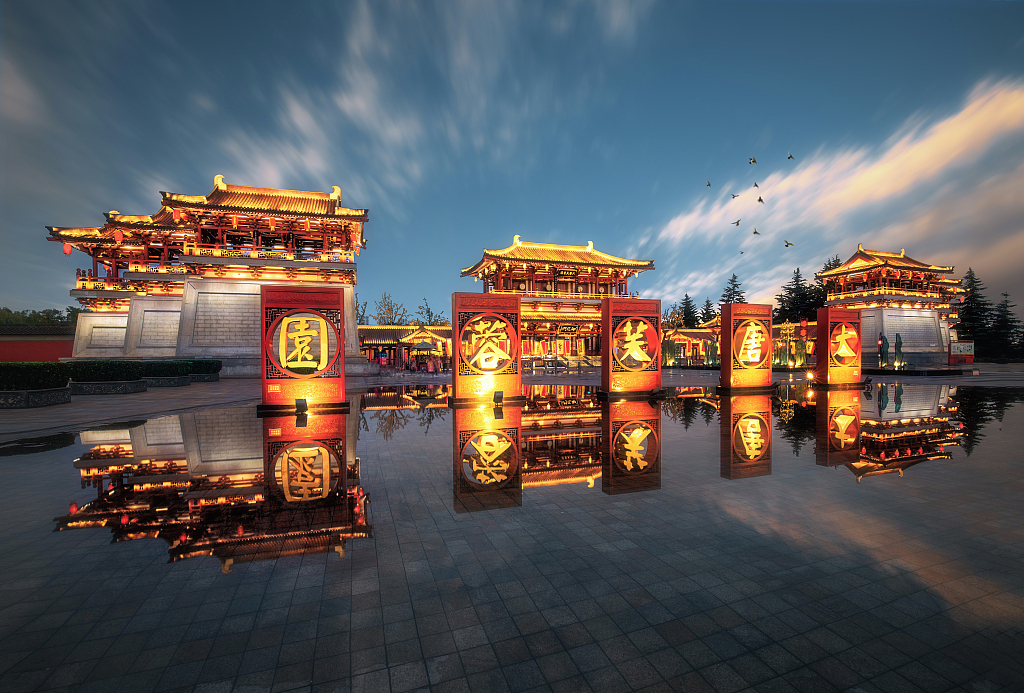

Night view of Xi'an City, NW China's Shaanxi Province. /VCG Photo
"The Longest Day in Chang'an," a Chinese hit web series set during the Tang Dynasty (618-907) has sparked interest in Xi'an, the ancient capital of the dynasty in today's northwest China's Shaanxi Province.
The drama takes place in Chang'an (known today as Xi'an) during the most prosperous and cosmopolitan period of China's imperial history, which made Xi'an become a destination of so-called "dream back to great Tang Dynasty" tourism.
Located in the northeastern part of the city, Daming Palace was the imperial palace complex of the Tang Dynasty. It is the world's largest complex of brick and wood palaces, with an area equivalent to four Forbidden Cities and three Versailles Palaces. It served as the imperial residence for 17 emperors over a period of more than 220 years.

Ariel view of the Daming Palace, Xi'an City, NW China's Shaanxi Province. /VCG Photo
Every frame from the series is reminiscent of the prosperity of the great dynasty. Over 1,000 years on, today's Xi'an is still flourishing, and its beauty is no less than that what it was during the Tang Dynasty.
"The Longest Day in Chang'an" continues to send curious visitors to the original location of the drama. The old city walls remain intact, vendors of all descriptions still crowd the narrow lanes of the Muslim Quarter, and the Xi’an Museum highlights the history of the old capital and brings visitors back to 108 Fang (known as blocks today) in Chang'an City.

Xi’an Museum, Xi'an City, NW China's Shaanxi Province. /VCG Photo
In the first week of July, online inquiries about flight ticket bookings to Xi'an increased by 130 percent year-on-year, according to data from Ctrip, a Chinese online travel agency.
Tourists looking to visit locations featured in the series can pay a trip to the Big Goose Pagoda, which is one of Xi'an's most famous landmarks from imperial days. One of China's best examples of a Tang-style pagoda, it was completed in 652 to house Buddhist sutras brought back from India by the monk Xuan Zang. His travels inspired one of the best-known works of Chinese literature, Journey to the West.

The Big Goose Pagoda, Xi'an City, NW China's Shaanxi Province. /VCG Photo
When nights fall, the Tang Paradise treats visitors to a spectacular Lake Show, featuring lasers and other special effects including video projection onto water. It is a large theme park near the site of the ancient Furong Garden but consists almost entirely of modern construction.

Night view of Tang Paradise, Xi'an City, NW China's Shaanxi Province. /VCG Photo
"Young people are the main viewers of some popular shows. They pay attention to the beautiful scenery as highlighted in entertainment shows," Shao Jihong, senior director of flight ticketing operations at Ctrip was quoted as saying. New forms of tourism are hoped to bring new vitality to the ancient capital.

Copyright © 2018 CGTN. Beijing ICP prepared NO.16065310-3
Copyright © 2018 CGTN. Beijing ICP prepared NO.16065310-3